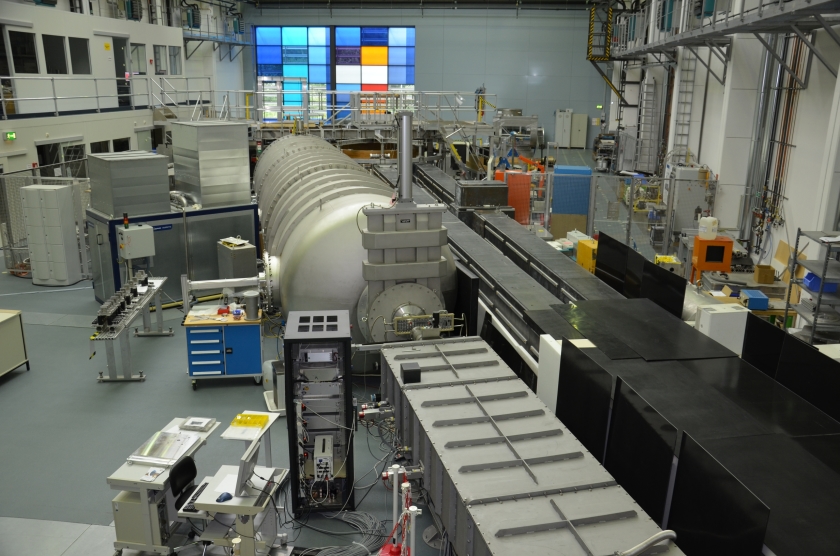Neutron instrument VSANS will move to Penn State University, USA

The VSANS instrument (here in the neutron hall at BER II) will move to Penn State University. © A. Kubatzki/HZB
At the end of 2019, the Berlin neutron source BER II was shut down as scheduled. To ensure that the high-quality instruments can continue to be used for research, they are moving to suitable neutron sources in Germany and abroad. Now, another move has been agreed upon: The Very Small Angle Scattering Instrument (VSANS) will find a new home at the Breazeale Research Reactor at Penn State University, USA, in spring 2022.
At Penn State University, the Radiation Science & Engineering Center (RSEC) operates the Breazeale reactor, which produces neutrons for research. An expansion is now planned there to accommodate the new, very large VSANS instrument.
VSANS stands for Very Small-Angle Neutron Scattering, i.e. the scattering of neutrons at very small scattering angles. This method enables insights into colloidal systems and soft matter, but also into glasses, biomimetic structural proteins, microemulsions, flexible electronics and many other questions, from physics to biology.
"Our goal is that our excellent instruments will continue to be available for research and innovation after BER II is shut down. We are therefore very pleased that the VSANS is being reinstalled at the Breazeale reactor", says Roland Steitz, HZB. This means that the HZB experts have now found a new location for almost all neutron instruments.
"The Breazeale reactor at the Penn State RSEC will be the only university research reactor with a SANS facility in the United States," says Kenan Ünlü, director of the RSEC and professor of nuclear engineering.
arö
https://www.helmholtz-berlin.de/pubbin/news_seite?nid=23155;sprache=en
- Copy link
-
Green hydrogen: A cage structured material transforms into a performant catalyst
Clathrates are characterised by a complex cage structure that provides space for guest ions too. Now, for the first time, a team has investigated the suitability of clathrates as catalysts for electrolytic hydrogen production with impressive results: the clathrate sample was even more efficient and robust than currently used nickel-based catalysts. They also found a reason for this enhanced performance. Measurements at BESSY II showed that the clathrates undergo structural changes during the catalytic reaction: the three-dimensional cage structure decays into ultra-thin nanosheets that allow maximum contact with active catalytic centres. The study has been published in the journal ‘Angewandte Chemie’.
-
Optical innovations for solar modules - which are the most promising?
In 2023, photovoltaic systems generated more than 5% of the world’s electrical energy and the installed capacity doubles every two to three years. Optical technologies can further increase the efficiency of solar modules and open up new applications, such as coloured solar modules for facades. Now, 27 experts provide a comprehensive overview of the state of research and assess the most promising innovations. The report, which is also of interest to stakeholders in funding and science management, was coordinated by HZB scientists Prof. Christiane Becker and Dr. Klaus Jäger.
-
Georg Forster Research Fellow explores photocatalysts
Dr. Moses Alfred Oladele is working on photocatalysis for CO2 conversion in a joint project with the group of Dr. Matt Mayer, HZB, and Prof. Andreas Taubert at the University of Potsdam. The chemist from Redeemer's University in Ede, Nigeria, came to Berlin in the summer of 2024 with a Georg Forster Research Fellowship from the Alexander von Humboldt Foundation and will work at HZB for two years.
